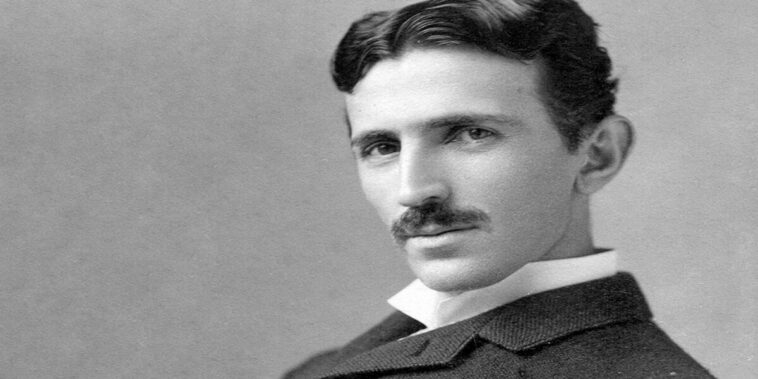Table of Contents
Nikola Tesla is one of the most influential figures in the history of science and technology. We tell you his story and why he was ostracized both during his lifetime and after his death.
Nikola Tesla, the man who changed the world
When he was 17 years old, Tesla was infected with cholera. He came close to not recovering, but was eventually cured.
“If you are cured, I will send you to the best engineering school.”
When he was 17 years old, Tesla was infected with cholera. He came close to not recovering, but was eventually cured. Shortly before, his father promised him that if he succeeded, he would send him to a great engineering school, just as he wanted.
So, after a stint in the army, he entered the Graz University of Technology in Austria.
There he began to germinate the idea that would mark his life: to devise a way for free energy to reach everyone. Later he would make the leap from Graz to Vienna, where he worked for the National Telephone Company in 1881, to finish his European journey in France, since in Paris he found a new job with the Edison Company.
From the French capital he set off on his transoceanic journey to New York in 1884. There, the same year that the Statue of Liberty also arrived from Paris, Tesla went directly to the offices of someone who would mark the rest of his life: Thomas Alva Edison. A letter of recommendation from Charles Batchelor, his last boss in Europe, was addressed to him:
I know two great men, and you are one of them. The other is the young man who is the bearer of this letter.
And Edison hired him that very day. But there were differences between the two of them that grew as time went on. Differences that began in the way they saw the outcome and direction of their work.
The war of the currents
Edison was an advocate and early introducer of direct current, and with it he achieved his first customer base in the New York of the early 1880s, with small power plants to bring power to just a hundred customers in the city who used this system.
Tesla’s system was better and is still in use today, but Edison was only thinking of his business, but Tesla was convinced that alternating current was a better solution. Alternating current is the electric current in which magnitude and direction vary cyclically. And it soon prevailed over direct current and we are still using it in our homes today, more than 150 years later.
So, in effect, Tesla’s idea was better, but he needed Edison to implement it. That’s when the conflict broke out, with Edison defending his fortune at all costs.
There was no way Edison was going to allow a foreigner who had just arrived in town to take away his fame and jeopardize the kind of electrical empire he had managed to build.
Ego and money came together. Although Tesla later met the entrepreneur George Westinghouse, who had deployed an alternating current electrical network in Massachusetts, there was still a key piece missing for the puzzle in which alternating current would be able to impose itself uncontestably.
“When you’re a full-fledged American you’ll get to understand a good Yankee joke.”
That piece was the induction motor, which Tesla himself had already invented. For his patents, Westinghouse offered him $5,000 in cash, another $55,000 in stock, and $2.5 for each horsepower that had been generated in marketed electricity.
This deal, in part because of the rapid and extremely large scale of power distribution, did not come to fruition. It would have been unfeasible. And had it prospered, Tesla would have become perhaps one of the richest people in the world.
Knowing his talent, Edison channeled his envy by humiliating Tesla.Meanwhile, and throughout the late nineteenth and early twentieth centuries, Edison, a prisoner of envy, did not cease to humiliate and ridicule Tesla.
From making him work eighteen hours a day from Monday to Sunday fixing technical problems to putting on “shows” to discredit alternating current.
For example, applying electric shocks to animals or advertising its use in the electric chair, invented a few years earlier by Harold P. Brown, with the intention of frightening the public about its use. What he did not say was that Brown was secretly financed by himself.
Oblivion
In the last years of his life, The Times interviewed Tesla, who revealed that he only hoped to live long enough to at least place a device in a room that could be activated by the energy around him.”
In his twilight, Tesla died alone, abandoned. After his death in 1943, the campaign began to erase his name from history and to attribute his successes to others, as well as to focus his memory on his eccentric character.
For example, Edison was proclaimed the father of electricity, and Marconi the inventor of radio. But both, without Tesla, would have been nothing.
Especially Marconi, who used seventeen of Nikola’s patents for his first broadcast in 1901, taking credit for it without citing Tesla. This theft was remedied by the International Court in 1943, but even today popular culture still points to Marconi as the inventor of radio.
- Facebook Messenger

